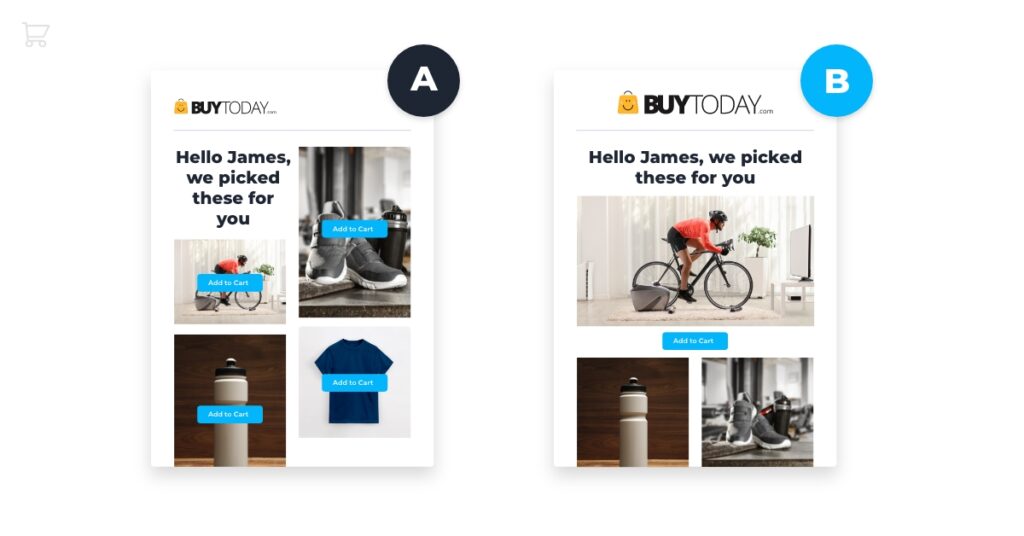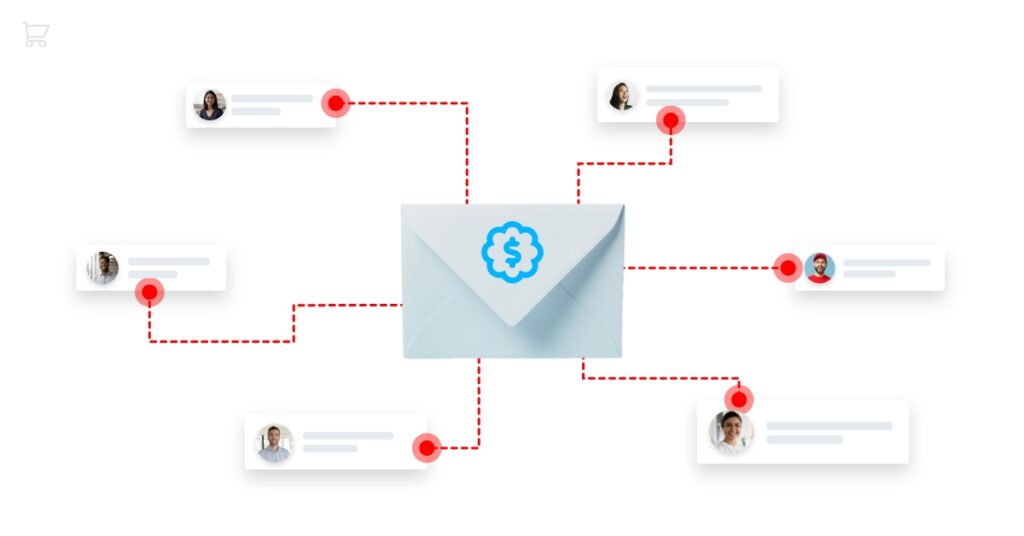Growing sales figures in your ecommerce business require the deployment of various marketing strategies. Combining them brings huge growth rates as building a loyal community around your brand brings many benefits.
However, the strategy only works if all its parts are equally effective. For example, you can develop a great mailing list, but having access to the vast pool of potential customers without good email marketing content is pointless.
If you’re experiencing poor email marketing results, here are a couple of reasons why that might be the case. Keep reading to learn more about them and how you can improve your email marketing strategy.
- Bad email design
- Missing personalization
- Unoptimized subject line
- Not building a relevant mailing list
- Skipping the segmentation part
- You’re not paying attention to analytics
- You’ve bought a mailing list
1. Bad email design
The first thing that a user sees when they open your email is the design of your message. It’s best to stick to the following rules.
- Stay minimalistic — There’s no need to add too many details in your email. While some graphic elements will help break the text, adding too many might be distracting. Keep things simple, and remember that the focus is on your words.
- Keep it short and informative — Don’t write too long emails. People are not interested in reading essays in their inboxes. Keep your message short, personalized and clear.
- Make sure it’s responsive — Whatever design you opt for, ensure that it fits screens of all sizes. As smartphones have become widely adopted, the chances are subscribers will open your email on a device with a smaller screen.
- Use a professional signature — Create unique signatures that’ll leave a lasting impression. An email signature management software might help you better manage signatures across your mailing lists. Make sure it includes all your contact details alongside your photo.
There’s not a single formula that works perfectly. However, these rules are something to keep in mind when starting. Use different email designs to see how people are responding. After some time spent on testing, you’ll get to see what’s the best approach.
2. Missing personalization
Creating templates is the most effective way to reach out to broad audiences. However, if you send out that template email, you run the risk of distributing an impersonal message that targets nobody.
But with a bit of A/B testing and experimentation, you can explore various personalization approaches.

A starting point is to address your reader by their name, but there are more ways to make an email more personal. For example, instead of addressing your readers as a company, have someone from your team send out the emails.
The readers will have a sense that they’re talking to a person and not an enterprise, resulting in higher open rates.
3. Unoptimized subject line
According to a report from Radicati, an average user receives over 100 emails per day. That means that you’re competing with 100 other subject lines every day.
That’s why you’ll have to create eye-catching subject lines that resonate with and engage the reader. Achieving this goal is crucial as the user will simply skip your email and opt to read another one. A/B testing is another way to try out different subject lines to see which kind will perform best.
A general rule to follow is to write concise, transparent and catchy subject lines. Don’t be misleading and promise something that’s not there.
4. Not building a relevant mailing list
Remember that all people on your mailing list got there because they’ve shown interest in something you’ve offered. If you deviate from that promise, your emails will become less relevant to your audience and won’t match their expectations.
For example, if you’ve promised relevant updates from your industry, keep your emails about that. Your audience didn’t sign up to receive promotional material for your product.
Not staying relevant will result in more unsubscriptions from your mailing list.
5. Skipping the segmentation part
Segmenting your audience will allow you to create personalized emails that resonate with your customers. There are several ways you can segment your mailing list. Some of them include:
- Location
- Age
- Registration date
- Purchasing habits
- Email subscription form type
It depends on your creativity and how you’re planning to get the relevant user data. Once you have more information, you can craft more relevant emails for your subscribers.
Try out different email list-building tools, as some already include some segmentation features that you’ll find beneficial.
6. You’re not paying attention to analytics
All the available analytics are there to help you improve your email marketing strategy. There are several key metrics that you should explore.
- Open rates — These metrics show the effectiveness of your subject lines. Poor open rates usually mean that you’re not writing the most optimal subject lines. Try out different options and see how they perform. Keep in mind the latest iOS update that affects open rates though.
- Click-through rates — This metric points to the quality of your email design. How big is the text? Is the call to action direct and prominent enough? Are users on mobile viewing your email as intended? You’ll need a lot of experimentation with email design to see what’s best for higher click-through rates.
- Unsubscribe rates — If you notice that your mailing list members are unsubscribing more, you’re probably sending less relevant emails. Revamp your approach and go back to bringing value to your subscribers.
Following stats for each of these will help you create more effective email marketing strategies. The key is to perform A/B testing at all times. Even though your marketing approach might currently be working great, it’s always a great way to have a backup plan.
Doing that will enable you to adapt if your current strategy stops performing well.
7. You’ve bought a mailing list
If you’re thinking of buying an email list, you should probably opt for another method. While you’re going to get your email in front of a big audience, only a tiny percentage might need your product or service.
There are multiple reasons why you should never do this.
- Spam — You’re blatantly spamming people who’re not interested in your services. It’ll immediately backfire as your brand image will collapse.
- Illegal — There are two ways in which trading email lists is illegal. First, you’re buying other peoples’ private data. Second, you can’t send promotional materials to someone who hasn’t opted to receive them.
- Pointlessness — Sending an email to an audience that has no interest in your product will not bring any good results. Therefore, it’s best to avoid the practice.

It’s much better to invest time in slowly building your mailing list with potential customers who have an interest in your brand.
Concluding thoughts
Creating an effective email marketing strategy is not a simple process. On the contrary, it takes a lot of effort and time. It’s an ongoing process full of experimentation, testing and persistence.
If you manage to optimize your campaigns, expect great results. But more importantly – you can also rely on automation to grow sales figures. Email marketing is still a very effective marketing strategy and, to leverage its potential, you have to pay attention to analytics.
Need to chat about your email marketing strategy?
More than 10,000 marketers use Maropost to engage with their prospects and customers through emails, SMS, social media and more. We’re here to help you grow your business!
Chat Now

